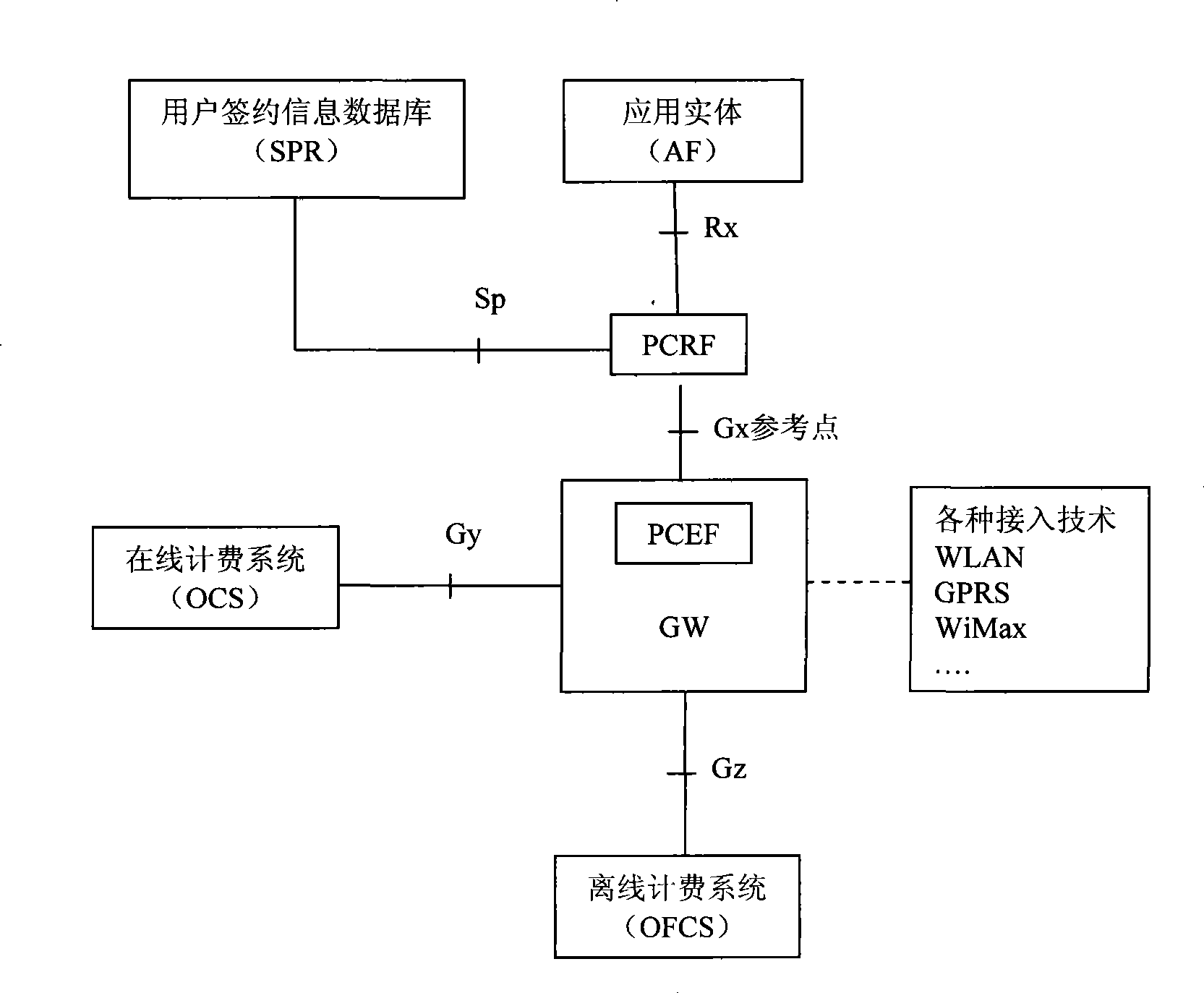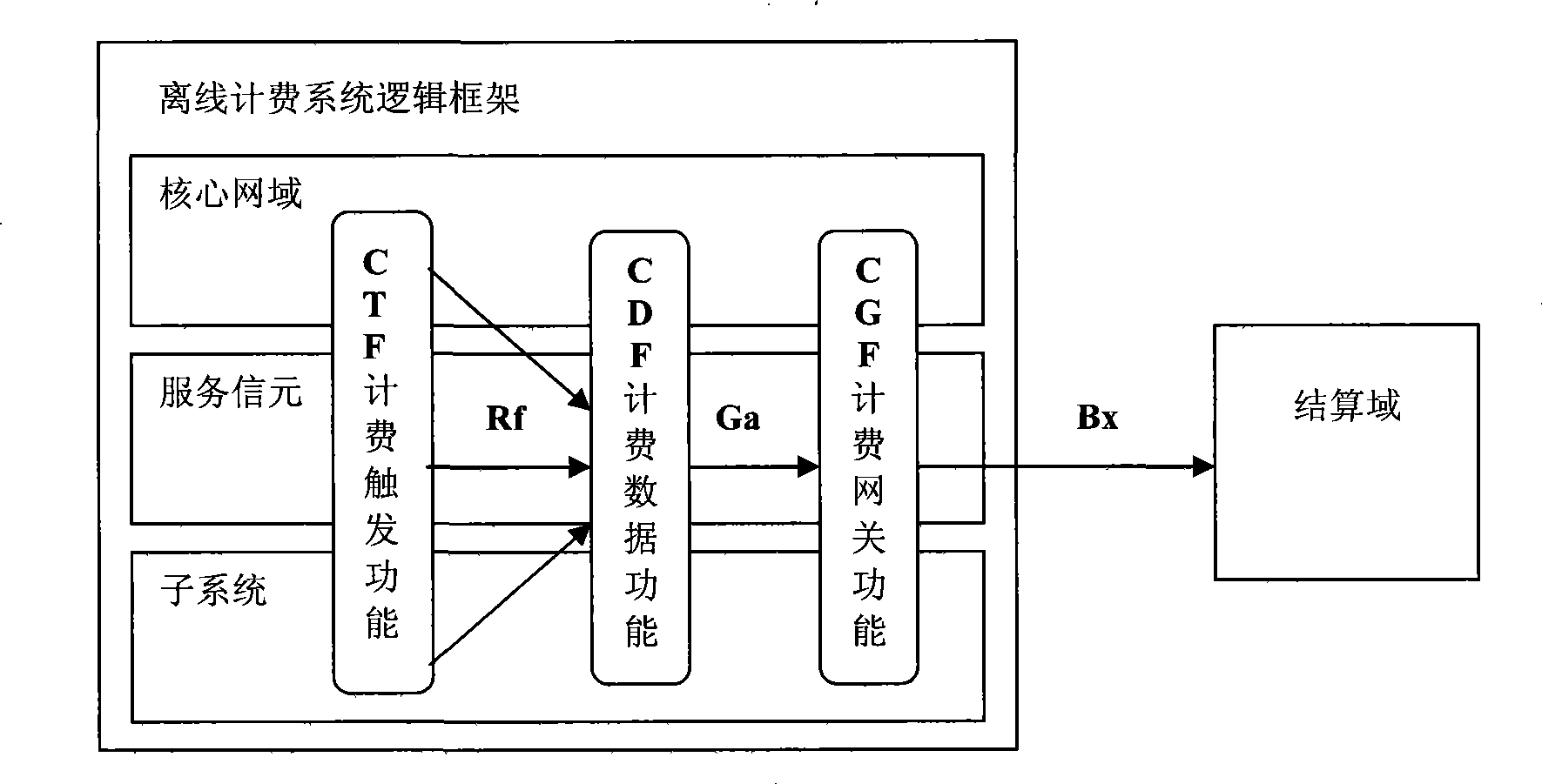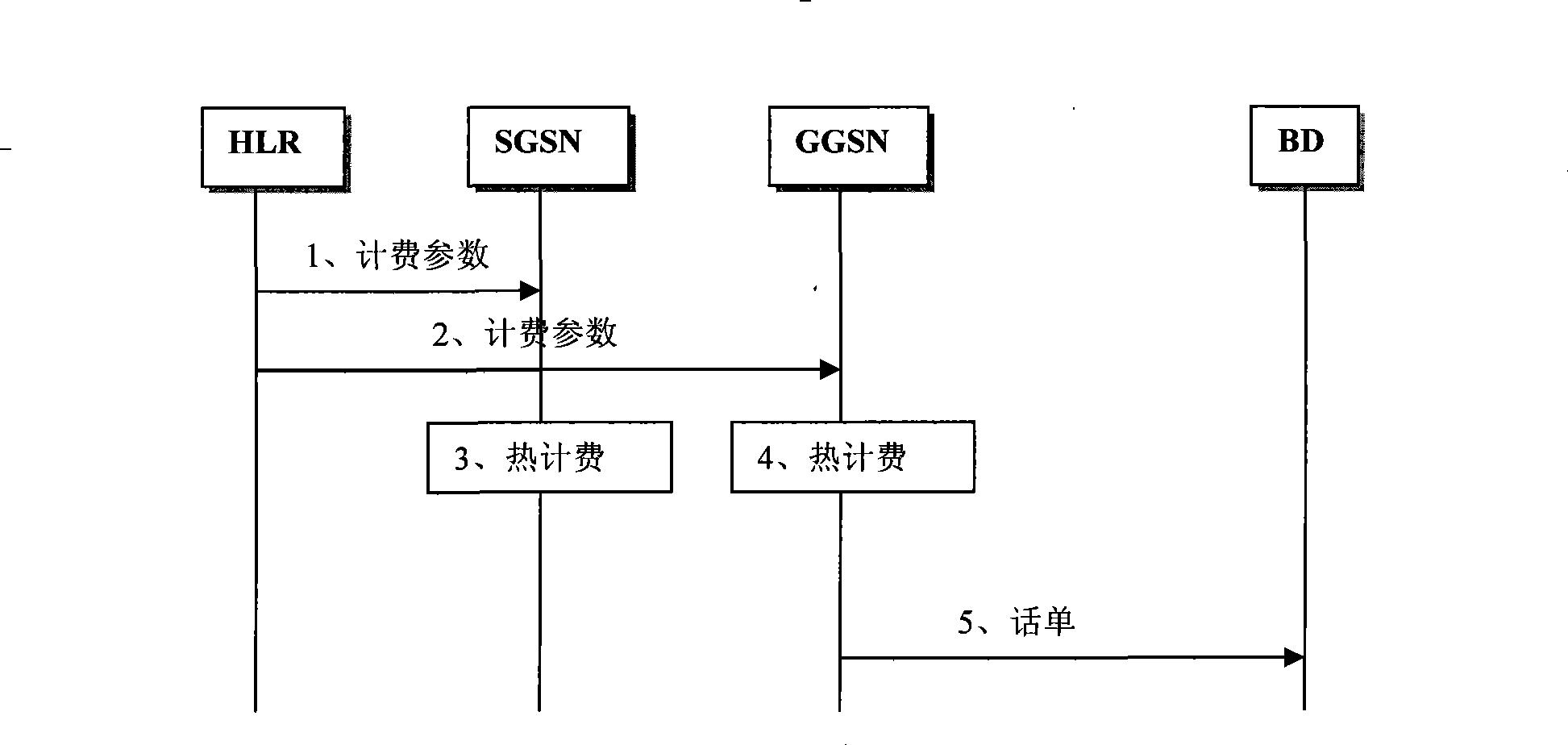Method and apparatus realizing hot charging in PCC architecture
A device and billing execution technology, applied in the field of billing technology, can solve problems such as inconvenience and decentralized maintenance of decision points, and achieve the effect of overcoming scattered decision points and facilitating management and maintenance
- Summary
- Abstract
- Description
- Claims
- Application Information
AI Technical Summary
Problems solved by technology
Method used
Image
Examples
Embodiment 1
[0085] This embodiment provides a process for the PCRF to determine the hot charging service flow according to the obtained application information from the AF. That is, after the user starts to make a voice call, the operator charges it normally. After a period of time, the user switches from a voice call to a multimedia session where the operator requires hot charging. At this time, PCRF collects session and media information from the AF and finds that the user's application has changed. Charging rules, then PCRF formulates PCC rules and sends them to PCEF according to the pre-configured hot charging policies and corresponding hot charging parameters (such as used to control the speed of hot billing generation of bills, etc.) stored on the PCRF by the operator , to perform hot billing operations.
[0086]Such as Figure 6 As shown, the specific implementation process of this embodiment includes the following steps:
[0087] (1) User voice call stage
[0088] Step 1. Oper...
Embodiment 2
[0101] In this embodiment, a process for the PCRF to determine the hot charging service according to the obtained bearer information from the PCEF is provided. That is, the operator can configure hot charging according to the bandwidth, for example, configure hot charging when the specified bandwidth is exceeded.
[0102] Correspondingly, the PCRF determines the processing process of the hot charging operation according to the change of the bearer sent by the PCEF as follows: Figure 7 As shown, specifically, the following steps may be included:
[0103] (1) The user's QoS meets the requirements of ordinary billing:
[0104] Step 1. Operators can configure hot charging policies for scenarios such as users, services, QoS, user locations, and specific time periods, and configure services and specific scenarios that require hot charging and parameters for controlling hot charging on the PCRF;
[0105] For example, the operator configures a bandwidth greater than 5 Mbps for hot ...
Embodiment 3
[0116] In this embodiment, the operator can configure the hot charging policy on the PCRF according to the time period, location, or whether the user is roaming; Perform hot billing processing. During period 2 (10:00 p.m. to 5:00 a.m. the next day), service flows with a bandwidth exceeding 5 Mbps need to be hot billed;
[0117] According to the above configuration for period 1 and period 2, PCRF can determine that the 2Mbps service flow in period 2 does not need to perform thermal billing operations, and in period 1, the corresponding thermal billing operation needs to be performed for 2Mbps service flows Billing operation, that is, before 5 o'clock in the morning, there is no need to perform hot billing operations for the 2Mbps service, and after 5 am, the 2Mbps service will be dynamically adjusted as a hot billing service. In a word, the PCRF can determine whether to perform the hot charging operation for the current service according to the configured hot charging policy, a...
PUM
 Login to View More
Login to View More Abstract
Description
Claims
Application Information
 Login to View More
Login to View More - R&D
- Intellectual Property
- Life Sciences
- Materials
- Tech Scout
- Unparalleled Data Quality
- Higher Quality Content
- 60% Fewer Hallucinations
Browse by: Latest US Patents, China's latest patents, Technical Efficacy Thesaurus, Application Domain, Technology Topic, Popular Technical Reports.
© 2025 PatSnap. All rights reserved.Legal|Privacy policy|Modern Slavery Act Transparency Statement|Sitemap|About US| Contact US: help@patsnap.com



